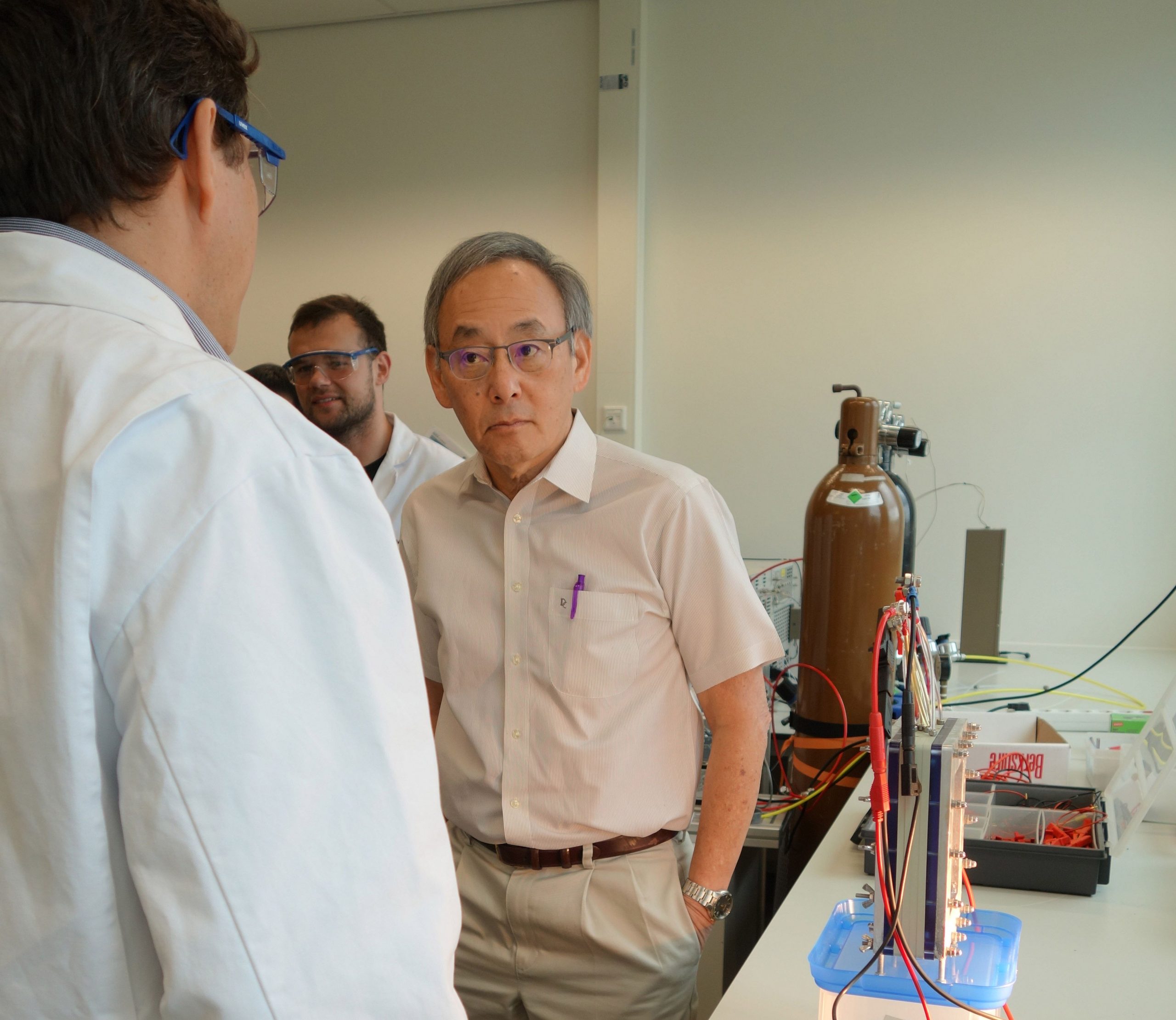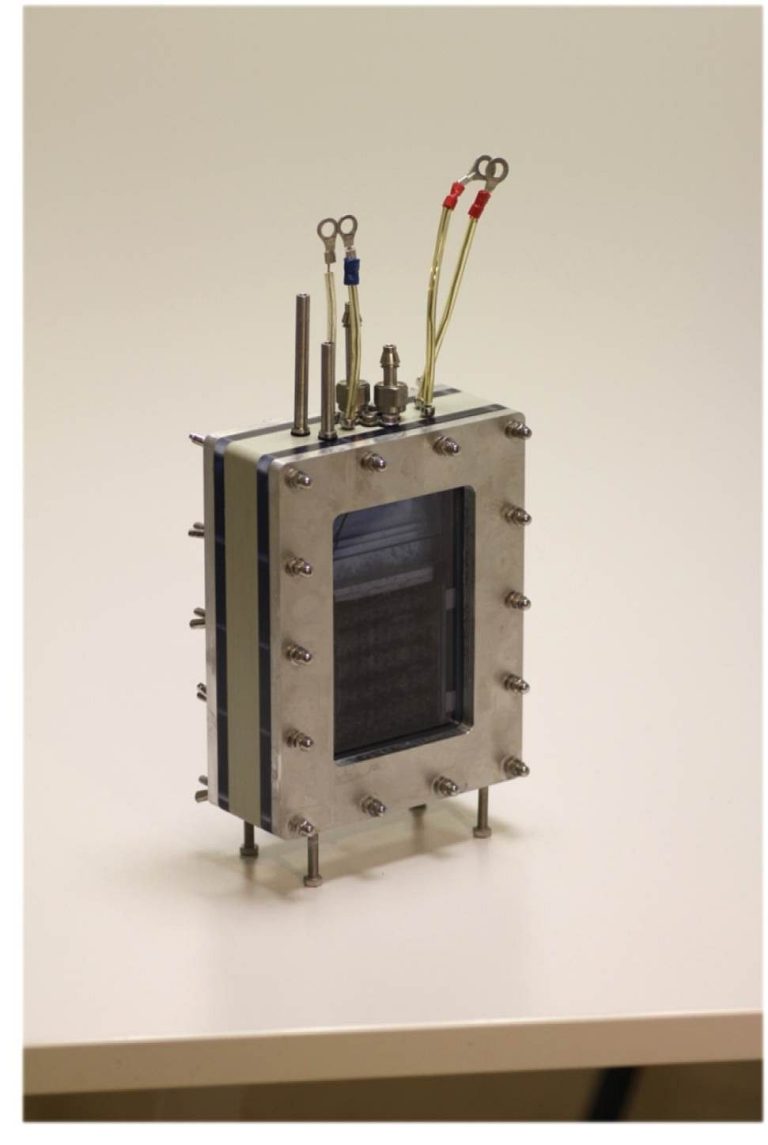Edison’s 1901 iron and nickel battery produced hydrogen when it was full. Professor Fokko Mulder saw this shortcoming as a benefit and reintroduced the NiFe battery as the ‘battolyser’.
With an increasing amount of energy from sun and wind, storage has become a major issue in the electricity supply. Batteries are under development, as are installations for producing hydrogen from excess power. Up to now, however, no one thought of combining the two.
The Ni-Fe battery was a variation on the nickel-cadmium battery, made by the Swedish inventor Waldemar Jungner around 1900. He found that the Ni-Fe type charged slower than Ni-Cd battery and that it ‘gassed’; it produced hydrogen when fully charged. Thomas Edison patented the finding in the US in 1901 and claimed the iron-nickel battery to be ‘far superior to batteries using lead plates and acid.’ Except for the gassing, that was. For petrol cars, lead-acid batteries became the standard. Ni-Fe batteries remained in use in mining, streetcars, forklifts and stationary applications. Ni-Fe batteries were produced until 1975 and had a reputation to be virtually indestructible and short-circuit proof.

Mulder commented: “It’s a very robust battery. Original examples are still working. Also, the raw materials are cheap and obtainable everywhere.”
When the battery charges, NiOOH forms at the positive plate (from Ni(OH)2) and iron (Fe) at the negative plate (from ferrous hydroxide Fe(OH)2. Mulder noticed that both of these materials (NiOOH and Fe) are known as catalysts for the forming of oxygen and hydrogen gas respectively.
“The fact that nickel-iron batteries also produce hydrogen gas while charging was always regarded as a drawback,” explained Mulder. “No-one has ever tried to combine power storage and hydrogen production to see whether it could be worthwhile.” He blames the lack of communication between the battery world and the hydrogen world for not having explored the combination.
The brick-sized prototype that Mulder’s student Bernhard Weninger constructed worked right away. Mulder said: “As soon as the battery approached full charge, it produced hydrogen.”
Experiments showed that the combination of storage and hydrogen production resulted in 80-90% energy efficiency, which is higher than Ni-Fe battery (60-70%) or hydrolysis (up to 70%) apart. Mulder, Weninger and others published their result in the magazine Energy & Environmental Science (Royal Society of Chemistry).

The Technology Foundation STW has awarded funding for further research at Mulder’s group Materials for Energy Storage and Conversion, supported by various companies including Nuon and Proton Ventures.
The current prototype stores up to 18 Watthour of energy and handles charging currents up to 20 Amperes. The next step is the development of a larger demo the size of a shipping container. That should be able to handle megawatts and store megawatt-hours (the power of one megawatt over one hour). A consortium is lining up for its development in the next 18 months.
The technology is promising because the materials are cheap, non-toxic and abundantly available. The metals are kept in a cheap water-based electrolyte. Besides the technology has proven to be long-lived and it requires no rare metals (like platinum) as catalysts.
• F.M. Mulder, Bernhard Weninger, et. al, Efficient electricity storage with the battolyser, an integrated Ni-Fe battery and electrolyser, Energy & Environmental Science, December 14, 2016.



Comments are closed.